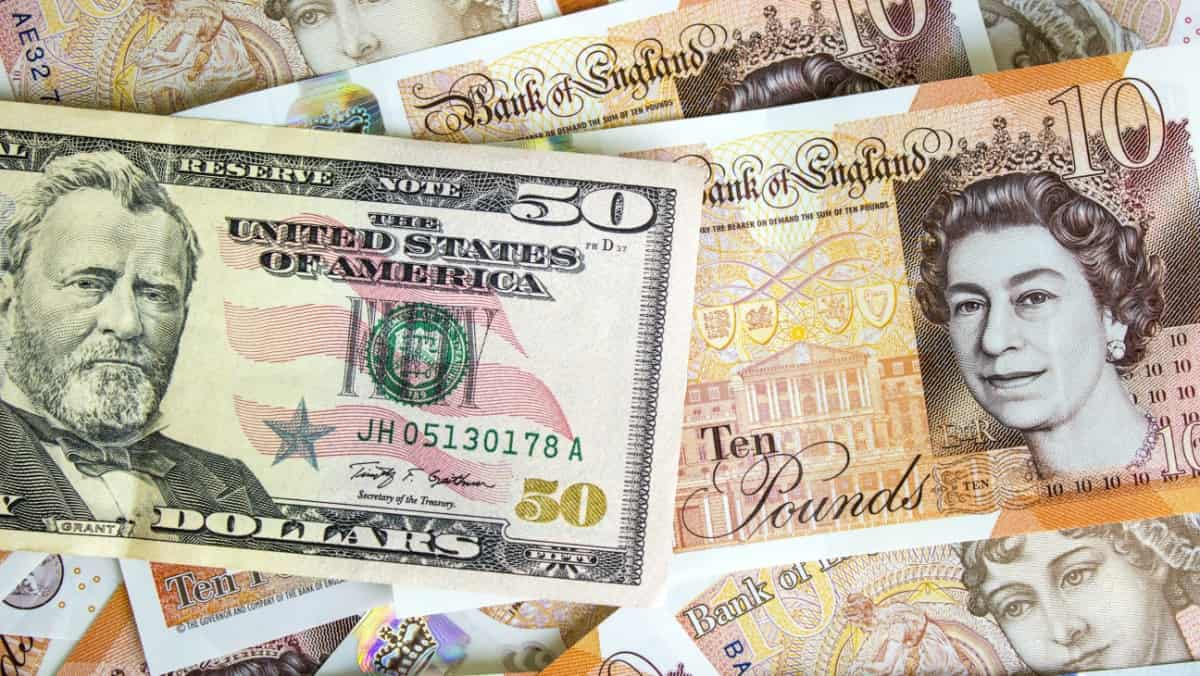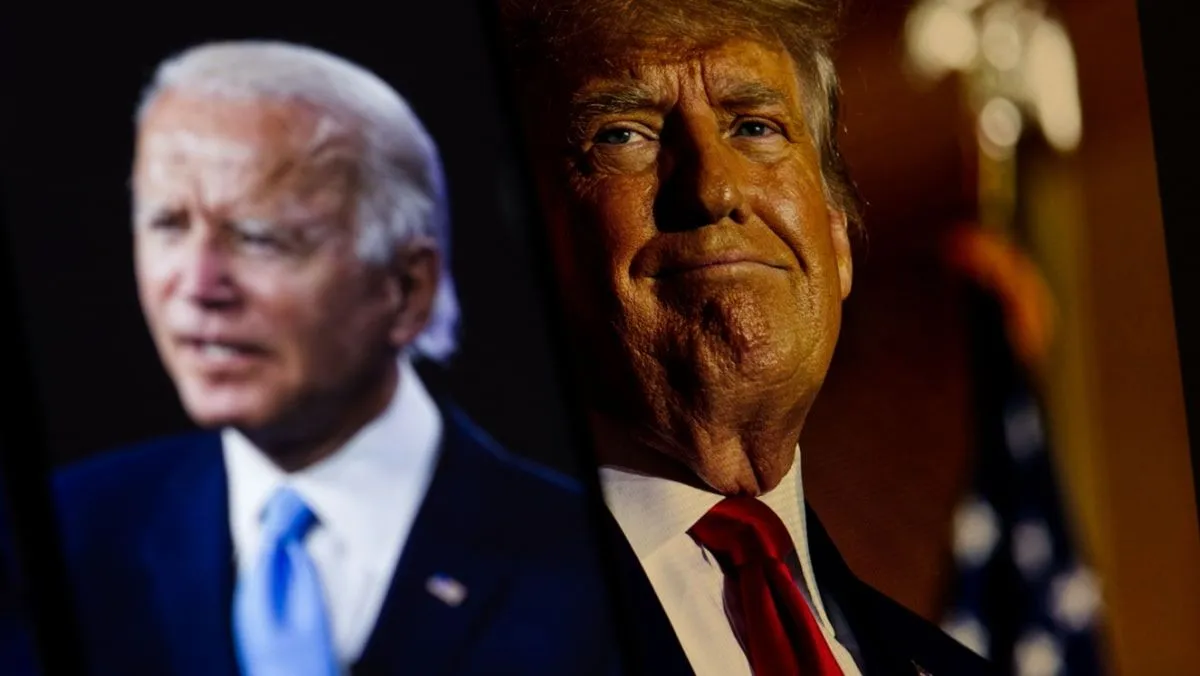
Bulldog on the leash: the only major currency to rise against the US dollar this year is… the British pound! Sterling hit a fresh year-high above $1.30 on slightly warmer-than-expected UK inflation data. UK CPI remained at the Bank of England (BoE) target of 2.0% vs. 1.9% expected and services inflation remained at 5.7%.
Is this enough to justify an interest rate cut next month? Traders say no — and pared bets on an August cut are down to 25%, in line with the comments from policymaker Jonathan Haskel and BoE Chief Economist Huw Pill, who both recently indicated the MPC would hold fire for now. Two percent on the headline UK inflation reading is fine — the main concern will be the stickiness of services inflation at this stage.
Gilt yields rose, with the 2-year rising 4 basis points (bps) to above 4%, which has helped put a bit of a bid into sterling. The UK inflation data definitely supports a stronger sterling narrative at this point.
GBPUSD breaching the $1.30 mark this morning could then see the stage set for a run to the July ‘23 highs at 1.31.
如果您今天進行了交易,請計算您的假設損益(總成本和費用).
市場

金融工具


帳戶類型
方向
數量
金額必須等於或高於
金額必須小於
金額應為最小手數增量的倍數
USD
EUR
GBP
CAD
AUD
CHF
ZAR
MXN
JPY
值
佣金
點差
槓桿
手續費
所需保證金
隔夜利息
過去的表現並不是未來結果的可靠指標。
所有與你帳戶貨幣不相同貨幣計價的金融商品的倉位,在平倉時將被收取轉換費用。
As discussed last month, the Fed could cut rates ahead of the BoE, which should offer some near-term support for sterling. My fear is that the BoE is being too cautious here. Nevertheless, if we see this move in sterling sustained, we should consider a new trading range for the pound between $1.30 and $1.40.
We should not discount the effects of the politics on this. As discussed before, the new Labour government introduces – for now, in the eyes of investors at least – a degree more clarity and consistency in terms of policymaking. A reset is clearly in play and people are looking at the UK with fresh eyes. The economy seems to be moving in the right direction and the UK economy is handling higher rates a lot better than expected despite the relatively strong transmission of monetary policy vs. the US.
That strong transmission should work in the UK’s favour when the BoE does start to cut. Maybe the Bank is mindful that there is a lot of pent-up energy in the old bulldog yet — and it’s going be careful about unleashing it.
Stocks were a bit tepid early doors in Europe despite ongoing moves in the US. The rotation continues with the Dow Jones Industrial Average posting a thumping 1.85% daily gain for its best day in a year, closing at a fresh record high. Small cap stocks continued to roar with the Russell 2000 rallying 3% for a fifth day of gains – now up 12% in the last month.
Now to Trump — and some market-moving headlines. It seems that markets need to reacquaint themselves with Trump’s ability to make stocks move with a few comments. Shares of the Taiwanese chipmaker TSMC fell after Trump said: “Taiwan should pay us for defence, we're no different than an insurance company”. Asian shares were a bit mixed overnight with losses focused on China/Taiwan tech.
Here’s what Trump said about Powell as Fed Chair: “I would let him serve [his term] out, especially if I thought he was doing the right thing”. What does he mean by “doing the right thing”? We know exactly what this means — cutting interest rates!
Which takes us on to a bigger question: Does Trump run down the US dollar?

What does J.D. Vance as VP signal about the Trump agenda? I think it means they are going all in. Final term, leading in the polls, along with the momentum — time for some courage and to take the country with you. As for us in the markets, we have to look at the effects of the Trump White House on the broader economy – tariffs, protectionism and maybe devaluing the dollar?
You need to understand where these guys are coming from and what they have been saying forever – globalisation killed American jobs and trade with China is fundamentally flawed. Trump and Vance’s goals would be to reinvigorate places like rust-belt Ohio and the Appalachians by bringing back jobs, which would hurt China. UBS notes that new tariffs of 60% on all Chinese exports to the US would more than halve China’s annual growth rate.
We know that Trump’s former trade chief Robert Lighthizer, who could be the pick for Treasury Secretary, has been talking about devaluing the dollar. This should hardly be surprising – we were talking about this during the last Trump presidency, when officials toyed with a “weak dollar” policy a bit by talking the dollar down before swinging back behind the “strong dollar” policy that every White House adopts.
Plaza Accord 2.0? Back in the 1980s there was coordinated action taken by leading economic powers to weaken the greenback.
What became the G7 group of nations may not be so keen to repeat such a move, although Japan and Korea are concerned about the weakness of their own currencies. Europe is hardly bothered. But the US can act alone, if it chooses. This could introduce a dangerous added element (currency) into what’s already a pretty heady mix of economic nationalism (trade, sanctions, and subsidies).
It could come alongside a weakening of central bank independence, which could further undermine the global financial system. Indeed, Trump may need to weaken the independence of the Federal Reserve if he really wants to cut interest rates a lot more than they plan right now. It would also set off a lot more inflation, thereby reducing the efficacy of bringing jobs back to the US. Trump could shrink the massive fiscal deficit, which would let the Fed cut more. But there is no support politically for this, as it involves tricky decisions on spending.
In short, markets should beware that Trump 2.0 could see complimentary policy changes that would lead to a weaker dollar, more inflation and potentially damage investment and trade. It could also make it a lot harder for coordinated international action to happen in future, when the inevitable next shock to the global financial system comes along. It may or may not bring back jobs to the Rust Belt, and he may shy away from outright devaluation, but those policies should definitely be on the markets’ radars.
When considering shares, indices, forex (foreign exchange) and commodities for trading and price predictions, remember that trading CFDs involves a significant degree of risk and could result in capital loss.
Past performance is not indicative of any future results. This information is provided for informative purposes only and should not be construed to be investment advice.
資產列表
查看完整的列表最新
查看全部
星期四, 21 十一月 2024

3 最小

星期四, 21 十一月 2024

3 最小

星期三, 20 十一月 2024

2 最小
